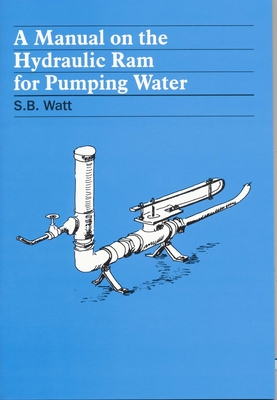
Part One contains details of how to make and maintain a small hydraulic ram on a suitable site, whilst Part Two takes a more technical look at ram performances and design considerations and also contains a useful bibliography.
'The author, Simon Watt, has assumed that his readers will have no specialized knowledge of hydraulics and will have access only to basic machine tools and a few common engineering materials. With this in mind he has produced a step- by- step guide to the hydraulic ram. He shows how it works, how it works, how to decide if a stream will supply the power and the water needed, how to choose the site and how to make, set up and work a hydraulic ram...
He goes on to describe, in the most elementary- but very understandable- way, how to make a hydraulic ram from mild steel, some nuts and bolts and two rubber discs. The equipment needed comprises hand tools, such as spanners, files, a hacksaw, some means of drilling and of welding or brazing. And ordinary lathe and a drilling machine would make the pump- builder's life easier, but the job could be done without them...
For these who want to look into the question more deeply, the author has a selection which gives more technical details of ram design and performance, and provides the basic information for rams of different sizes. To make use of this information the reader will need to have a basic understanding of engineering materials and fluid mechanics...
But prospective user should not be put off if he has neither specialized knowledge nor machines. Hydraulic rams were made and used very successfully long before anybody worked out the purely theoretical details. And the elementary ram described in the first part of the manual is very adaptable. If one is not big enough to supply the amount of water needed, two or more can be made and operated side by side, feeding the same delivery pipe.'







